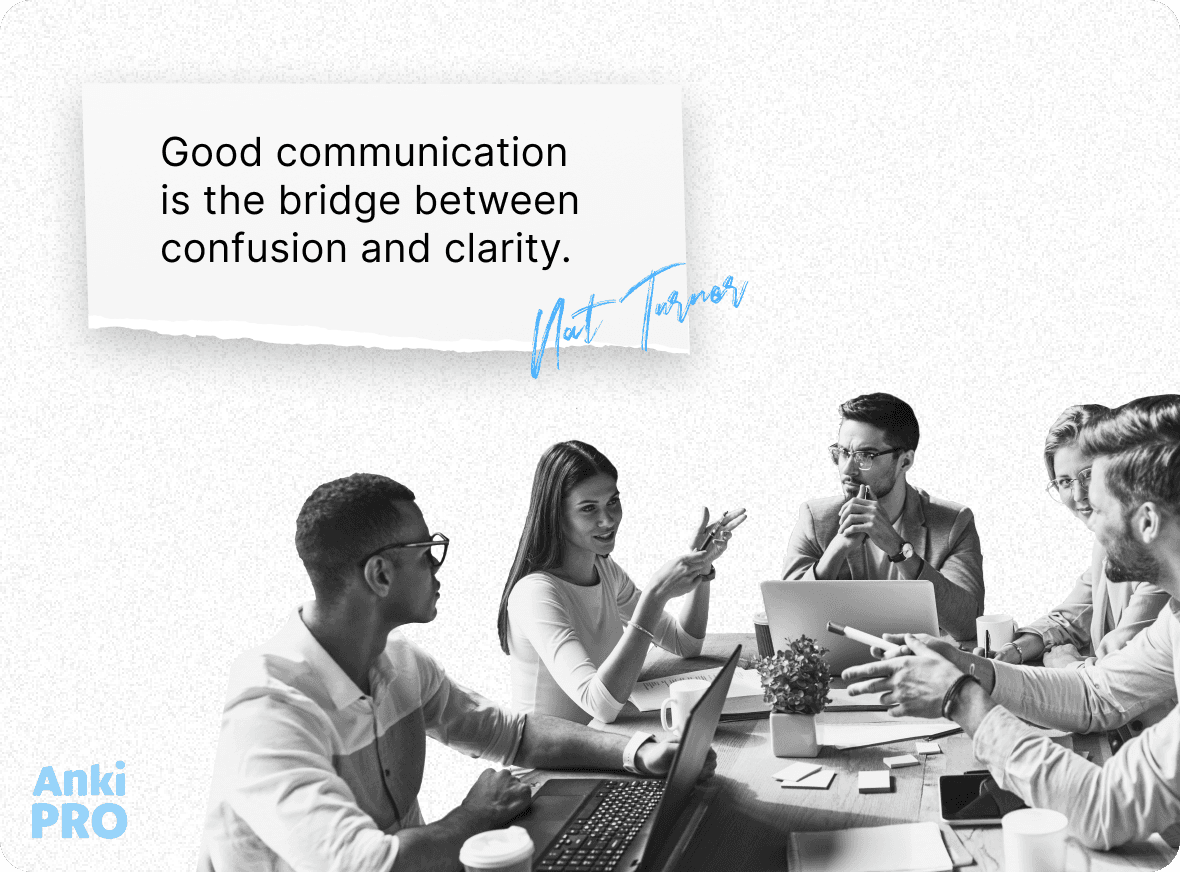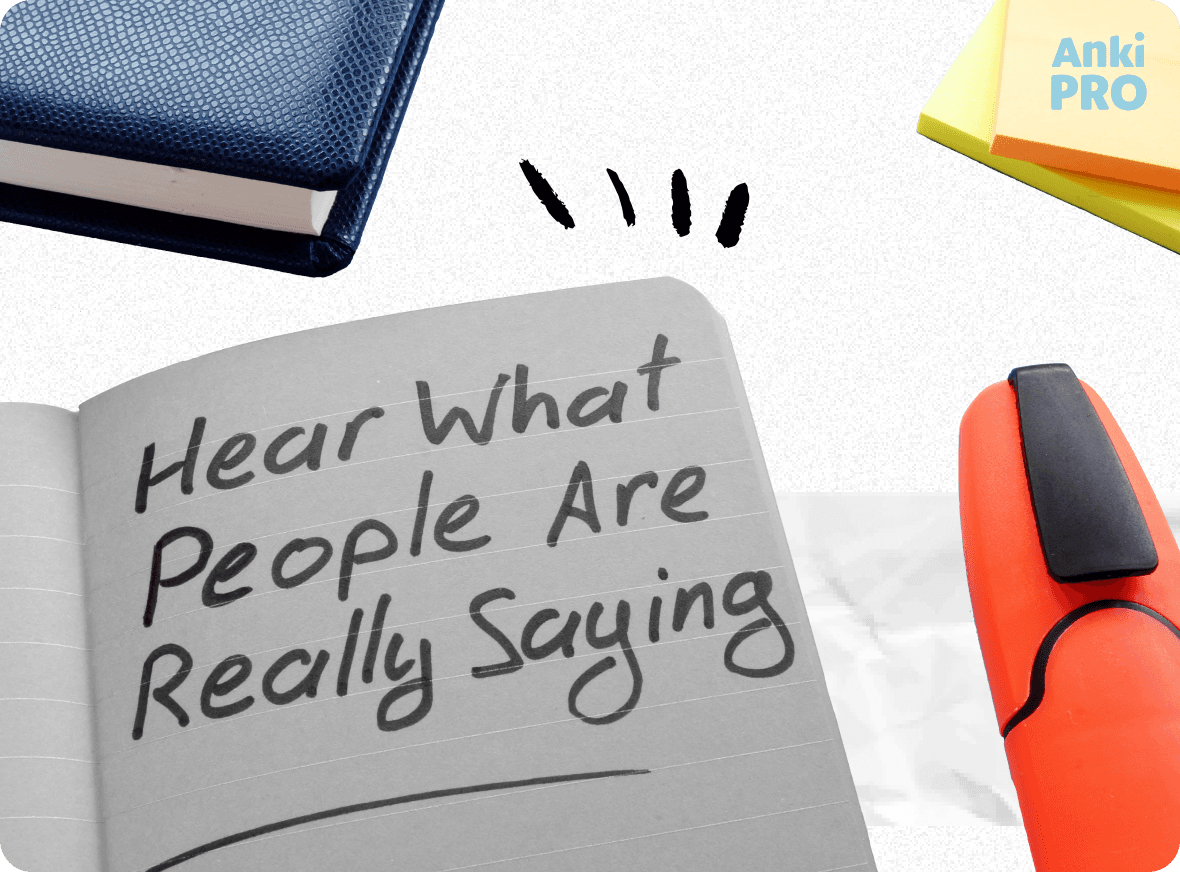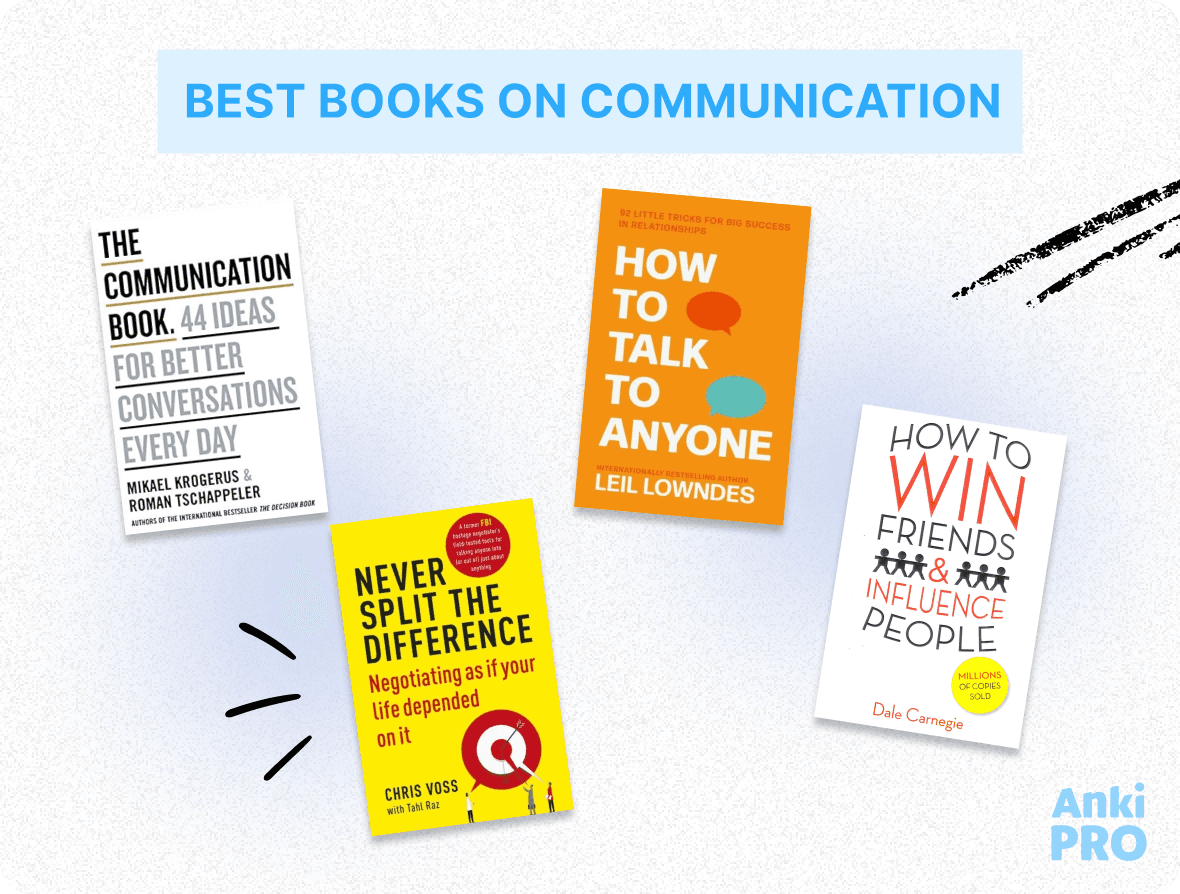Right from microscopic fungi to giant trees, every single living organism on Earth (including us humans) spends most of its life communicating with the world around it in one way or another. Which probably explains why we often take our communication skills for granted, rarely thinking of it as something that might need some extra TLC.
After all, we’ve been doing it since day 1 and it has worked out well so far, right? Except for that one teeny tiny instance where someone misunderstood what you were saying and gave you the stink eye for months after. Oh, and maybe add the time when you got told off for fidgeting when you were just trying to get rid of a bug..
Okay, maybe communication hasn’t been going that well so far. Point is: we could all do with some strategies to help us communicate effectively.
What does effective communication mean?
Effective communication skills refer to communicating clearly and concisely in such a way that your message is properly understood. But that’s not all. Since communication often goes both ways, good communication skills also involve active listening, accepting input from your partner, and responding to it.
Think of it as a dance. You need to be on the same wavelength as your partner, interpret both verbal and non-verbal cues from them, and respond in a way that they understand.
Additionally, effective communication is also compassionate and inclusive. In short, it makes all parties involved feel seen and heard.

Types of communication
From personal life to professional life, improving communication skills might be life-changing! We communicate with the world around us with every gesture and movement we make. All of this is to say that words aren’t the only form of communication. There are 4 (+1) major types of communication that we humans engage in.
Written communication
This involves communicating with someone via writing – say, a text message, a social media post, an email, or a handwritten letter if you’re old-fashioned. Online communication is a big part nowadays. Formal documents such as project reports, articles, and contracts also fall under written communication.
With written communication, the words you use, the tone of your messages (yes, messages do have a tone), the level of formality, as well as grammar and punctuation play an important role in the communication process.
Verbal communication
You verbally communicate with others using spoken words. This type of oral communication can happen face-to-face, over the phone, over a video call, or through voice messages on social media. And hey, songs and podcasts are a type of verbal communication, too!
In formal settings, presentations, speeches, and meetings all come under the umbrella of verbal communication. When speaking out loud, your tone of voice, pitch, cadence, pauses, and speech clarity all come into play.
Even though verbal communication often implies nonverbal signals, here we focus on explaining our own thoughts structurally, as well as practicing public speaking and presentation skills.
Nonverbal communication
Nonverbal communication refers to the way you communicate without using words and actually makes up nearly 70% of what we communicate. Your facial expression, hand gestures, body language, muscle tension, proximity to the other person, eye contact, appearance, and loudness are all types of non-verbal signals that contribute to the art of non verbal communication.
Whether consciously or unconsciously, we all weave non verbal communication behaviors into our conversations to reinforce the message we are sending with our words, add clarity, and keep it flowing. Interestingly, often it’s our nonverbal cues that indicate the beginning and ending of conversations as well.
The ability to stay focused and read body language is considered an important part of the journey required to improve communication skills.
Visual communication
When words fail, images come to the rescue. Humans are very visual creatures, after all. This is exactly what visual communication is: conversing via imagery such as photos, videos, emojis, gifs, or infographics. Sometimes this way of communicating ideas becomes more powerful than verbal communication.
The goal of visual communication is to help people understand the message better. For instance, when you present data in the form of a graph, you’re allowing your audience to easily digest what you’re trying to say by visualizing it. Important communication skills include the ability to use visual information!
Active listening
I know, I know. You’re probably thinking about what listening has to do with the various types of communication skills but hear me out (ha! See what I did there?)
Successful communication is a two-way street. It doesn’t happen in isolation unless you’re talking to yourself (hey, no judgment here).
This means that you need to tune in to what the other person is saying so that you can respond in kind, which is where active listening comes in.
Active listening refers to accepting the message from your conversation partner and making them feel heard — both through verbal and non-verbal behaviors. This might look like nodding your head, maintaining eye contact, and asking insightful questions to let them know that you’re invested in this conversation.

Importance of communication skills
Why do we need to communicate effectively, anyway? Turns out, there are a host of reasons to improve communication skills.
Prevents misunderstandings
Vague and ambiguous sentences that don’t clearly convey your message help no one. They leave a lot of room for the other person to fill in with their own interpretations, often leading to misunderstandings.
Helps you succeed academically
It’s no secret that essays, presentations, and class discussions are unavoidable parts of being a student. And all of these require you to communicate your thoughts and opinions clearly. It’s Anki Pro blog and our audience consists of lots of college students. And we know for sure that communication skills play a huge role in academic success, along with emotional intelligence, overall positive attitude, and being a good listener.
Gets you career-ready
No matter which career path you choose, you’re going to be doing a lot of communicating – often with strangers and executives. Think of a business presentation, a meeting, a job interview, or even workplace communication. Here, effective communication skills are going to be your friends, because you’re only going to get one chance to get your message across clearly.
Saves time
Time is an important factor. And poor communication skills can steal precious time in challenging situations. And vice versa, the more clearly you communicate, the fewer the chances of misinterpretation, saving all parties a lot of time that they could have spent on something productive.
Builds critical thinking skills
This one has a lot to do with being an active listener. When you really listen to what others are saying, you’re deploying your critical thinking skills by analyzing and evaluating their message so that you can respond appropriately.
Boosts teamwork
Be it projects or assignments, working with others is going to be an essential part of your life. And collaborations cannot end in shared success unless everyone communicates clearly. Effective communicators have better relationships, avoid misunderstandings, and accept constructive criticism, which is another perk of improving communication skills.
Enhances personal development
Apart from career development, personal life matters, too! The more effective your communication skills, the better bonds you can create with your peers, educators, and family. The quality of your interpersonal relationships has a direct connection to the way you view yourself. Students with a solid support network are more likely to feel confident, have high self-esteem, and are less likely to self-sabotage.

7 strategies to hone your communication skills
There’s a reason we throw around words like “blabber” and “nonsense” for any type of communication that doesn’t add value to anybody. Luckily, you can avoid the dreaded “what are they rambling on about” question from being thrown your way by using these 7 actionable tips to improve your communication skills!
1. Don’t use more words (or images) when few will do the trick
In other words: get rid of the clutter and be clear, concise, and to the point. Going on a verbal tangent is only going to leave your audience confused and bored.
Be it a presentation, speech, or an essay, to avoid meandering around, make a bullet-point list outlining the core message(s) you want to convey. Each sentence you speak (or write) should be relevant to this message in some way. While repetition might sometimes be necessary to help your audience retain the information, don’t overdo it.
It might help to step into your audience’s shoes and ask yourself this: does each sentence (or visual) add value and get me closer to the message being conveyed? If the answer is no, cut it out.
2. Tailor your communication to your audience
Communicating with a peer is always going to be different than communicating with an educator. Different audiences require different levels of formality as well as different communication channels, so you need to personalize your communication style based on who you’re speaking to. The amount of information you include will also differ based on your audience.
Let’s say you’re sick and need to miss classes that day. You want to let your friend and your professor know about your absence. To convey this message, you might send a text to your friend saying, “hey, G. out sick 2day 😢 pls take notes 4 me.” But, to communicate the same message to your professor, you’d probably email them something like:
“Good morning, professor.
I am very sick today, so I am afraid I’ll have to miss classes. I have arranged to receive notes from my friend to make up for my absence.
Thank you.
Yours, sincerely,
J.”
Notice the differences in communicating the same message to different audiences? This is what tailoring your communication looks like.
3. Be inclusive
Another thing to keep in mind in the context of good communication skills is inclusivity.
Does your image or message say something that might be offensive to certain groups? Are you presenting an infographic with tiny text to a group of people sitting far away from the screen? Are you constantly using masculine pronouns when speaking to a group of men with a single woman present?
The trick here is to avoid making anybody from your audience feel like they aren’t a part of the conversation. Even beyond the modern so-called “woke” agenda the ability to speak to everyone has always been one of the most important aspects of all communication strategies.
4. Pay attention to your body language
Non verbal communication skills are powerful. We constantly communicate through everything we do – our posture, gestures, and facial expressions. Oftentimes, this is unconscious on our part.
For instance, if you’re bored while talking to someone, you might start fidgeting, yawning, or looking down at your shoes. You may not even be aware that you’re doing it, and sure, you’re still nodding along to what they’re saying. But your non-verbal communication skill clearly sends the message that you’re not invested in this conversation.
So, the question to ask yourself is this: what is my body language saying? Here’s a tip to remember. Your non-verbal cues should align with the message you’re trying to communicate as these have more impact than the spoken (or written) word.
Here are some questions that will help you work on your body language:
- Are you using eye contact at the right places instead of avoiding it or going overboard?
- How are you positioning yourself when you’re communicating with someone? Are you standing too close or too far away? Is your stance relaxed, or does it come across as intimidating?
- What emotion do your expressions convey?
At the same time, pay attention to the others’ body language as well. What are they telling you without actually telling you? This will help you suss out their actual emotions and allow you to steer the communication in the right direction. If you’re giving a speech and see your audience yawning, it might be time to add in some interaction to keep them engaged.
Simply being mindful of both your and other people’s body language can go a long way in making you succeed at bettering communication skills!

5. Watch your tone
Just like body language, the tone and pitch of your voice matters. People react differently to different tones, so altering your tone to fit the situation is a critical skill within other great communication skills.
Angry people tend to be louder, while self-assured people use a lower pitch to communicate.
So, ask yourself this: what do you want your tone of voice to say? Do you want to assert authority? Be polite, but firm. Do you want to calm someone down? Use a soothing cadence. Want to teach something to someone? Speak with a helpful tone without sounding patronizing or condescending.
When aiming at communicating effectively through the written word, re-read your message through the eyes of others to ensure that the tone is correct.
6. Keep your audience engaged
Let’s face it. Even if you’re communicating something highly valuable, people are often not going to be interested if your communication style is boring.
Communication skills include the skill of engaging your audience.
They’ll miss out on what you’re trying to say, defeating the whole purpose of the conversation.
So, it’s good practice to keep your audience engaged. An effective communicator knows how to do it. This could be anything from telling a story to asking questions that make them think.
7. Listen. Really listen
We’re back again to active listening of speaker’s words, the bottom line of which is this: don’t listen to others just to give a reply; listen to understand what they want to convey. It’s all about paying attention and concentration while transferring information between you and your partner for oral communication in person.
This means being present in the conversation by removing distractions, having an open and non-judgmental mind, picking up on the other person’s verbal and non-verbal cues, analyzing the information given, asking for clarifications when needed, and responding thoughtfully with empathy.
This lets them know that you care about what they have to say.
Active listening is one of the most important communication skills.
Master the art of communication
Communication skills are the most important from all interpersonal skills. A spoken word can play devil’s advocate or bring justice to complex issues. With just a few carefully thought-out spoken words, you can change someone’s life – including your own.
So, master critical communication skills and wield this power wisely. Pay attention to your weakest communication skill first or develop what already makes you a good communicator.
The key is to stay fully present, be willing to accept different answers and actually train your communication skills like muscles, whether you’re aiming at workplace success, advancing your academic presentation skills, acing a job interview, or shifts in personal relationships.










